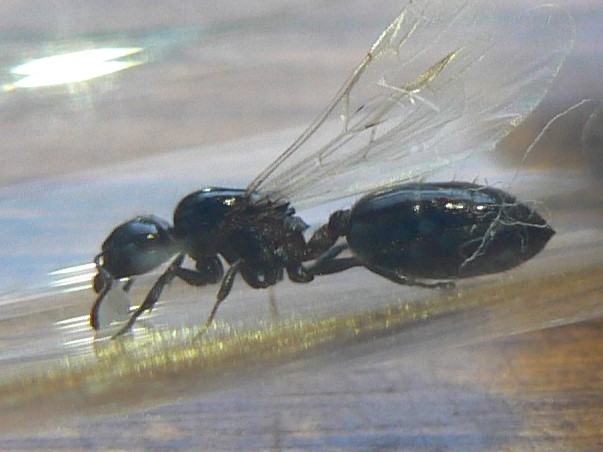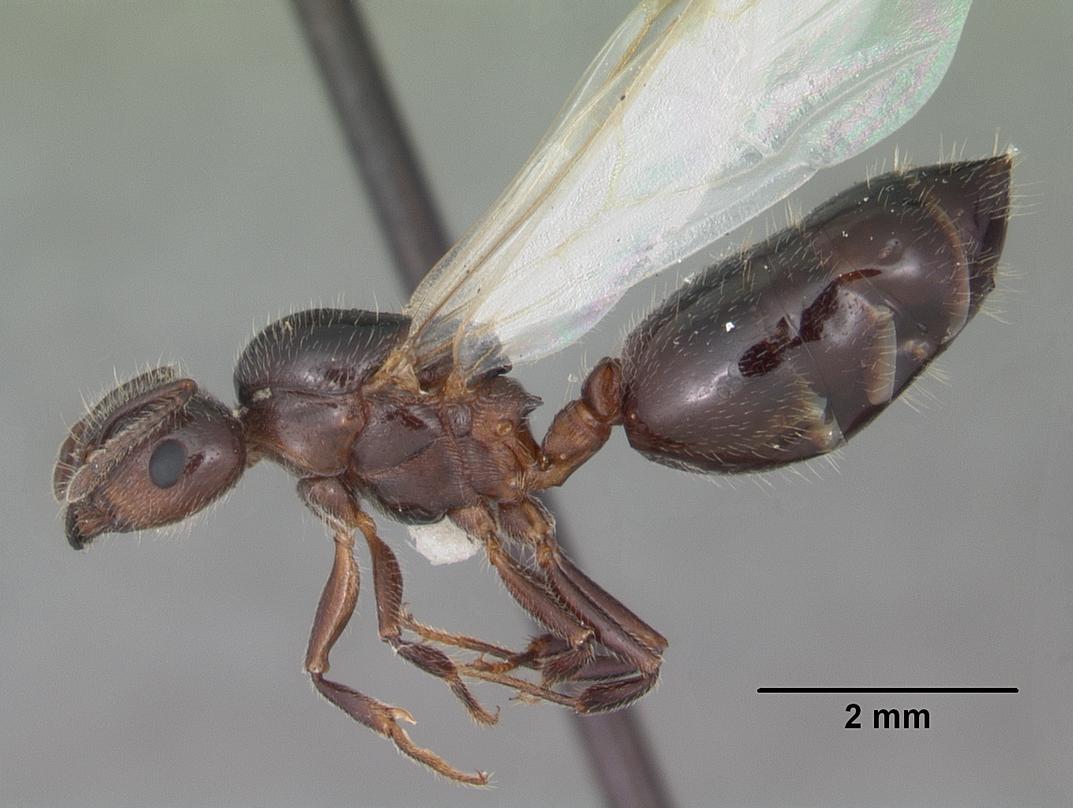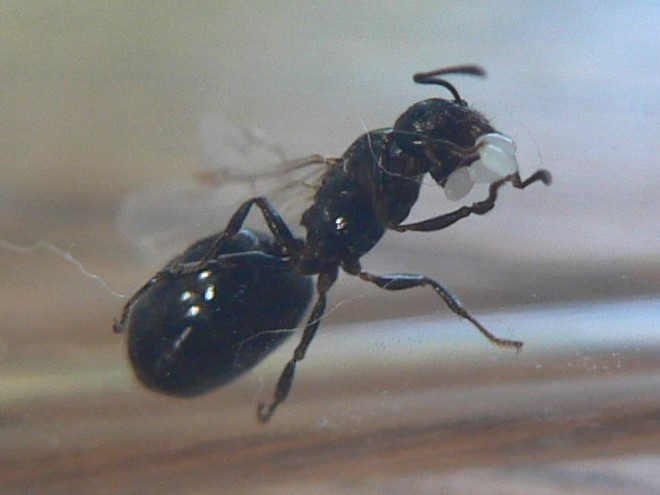A friend wanted me to ID these. They were found in the Cincinnati area. I took a few pictures of her, and I now have her.
1. Northern Kentucky, Cincinnati area
2. July 12, 2022
3. Zoo/Gardens
4. 8mm
5.Mostly shiny black, the bottom has a noticeable reddish hue
6. Petiole is distinctly different from cerasi, and is nearly identical to the Antwiki specimen of pilosa. Her eggs are roughly twice as large as cerasi eggs. Her body is stouter and gaster is rounder than cerasi, who's gaster is slightly more elongated.
8. Large Crematogaster workers from a large colony were observed in the general vicinity. They were ~4 mm long and had a reddish/brownish head and thorax, and a black abdomen. They were noticeably stockier and heavily built than cerasi or lineolata.
9. The queens were found at around 10 in the morning, yet the flights were just finishing, and could possibly have been going on for hours before. No alates were observed during midday.
The queen:
AntWiki's C. pilosa specimen:
Notice how similar the petiole and back of the thorax are in both images. cerasi lacks the large spine on the back of the thorax which both these specimens have. Other aspects of the petiole are identical as well.
Now observe how large the eggs are in proportion to the 8mm queen. They are at least 3 times larger than my Tetramorium queen's eggs, and at least twice as large as my cerasi colony's eggs.
Edited by AntsDakota, July 17 2022 - 11:39 AM.





















